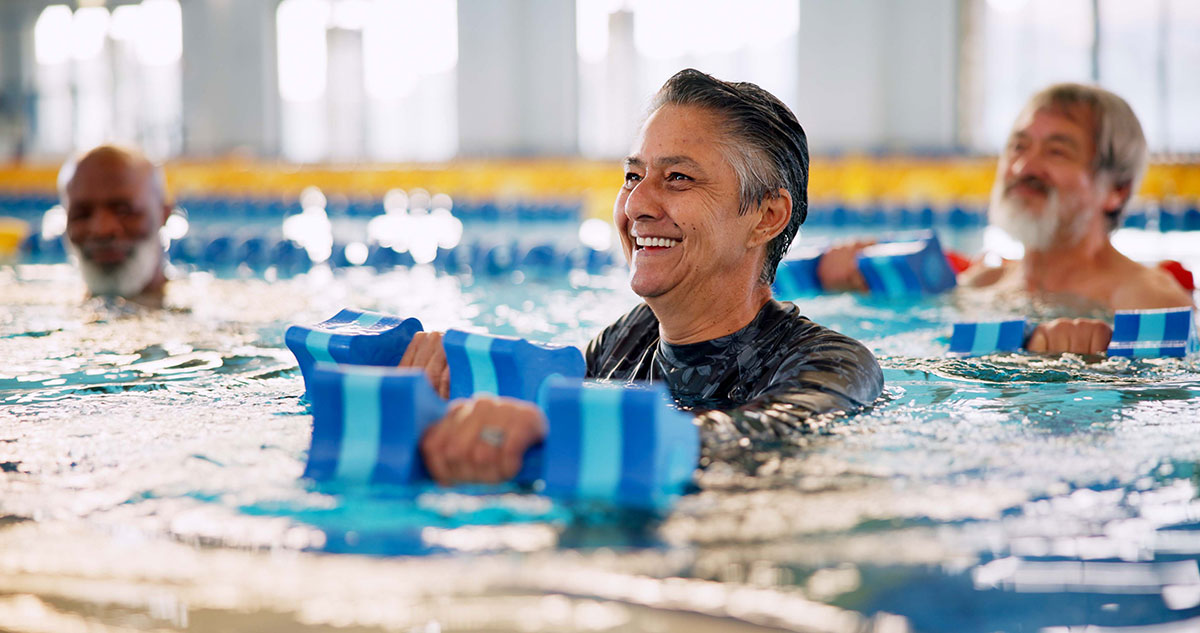5 Best Exercises for Arthritis to Help Improve Joint Pain
Arthritis affects millions of people and is one of the most common reasons for joint pain and stiffness. Even though arthritis can make movement more difficult, there are good reasons to stay active. Without muscle strength and mobility, joints become more vulnerable, which tends to slow us down even further. These five exercises are gentle on the joints and can help maintain movement, strength, and overall quality of life.

1. Walking
Walking keeps your joints moving, brings fresh blood through your knees and hips, and strengthens your legs. It's not just about speed or distance. Start with short, steady steps. That might mean a walk around the block or simply back and forth in the house. If the ground feels hard on your feet, a treadmill or softer surface might be better for you. Walking poles (or trekking poles) can help too. The key is to start where you are and build from there. Even short walks add up. A few 10-minute walks spread throughout the day can be just as beneficial as one longer session. If you're having any issues with your feet, check with a podiatrist before walking too much.
Why walking helps:
-
Improves circulation and brings more oxygen to stiff joints
-
Strengthens the muscles that support hips, knees, and ankles
-
Supports heart health and boosts energy
-
Helps manage weight, which reduces pressure on weight-bearing joints
2. Water-Based Activity
Moving in water gives your joints a break. The water supports your body while your muscles still get a complete workout. Swimming laps is one option, but you can also walk in a pool, push off the pool wall, use water weights, or join a water aerobics class. Local community pools sometimes have classes designed specifically for people with arthritis. Warm water in particular can feel soothing for sore or stiff joints. Many people find it easier to move in a pool than on land. When movement feels easier, you're more likely to stick with an exercise routine.
Why water-based exercise helps:
-
Reduces pain by minimizing joint stress and is great for seniors
-
Improves flexibility as water allows for greater range of motion
-
Builds muscle strength and endurance through gentle resistance
-
Provides a safe environment for people with balance challenges
3. Cycling
Cycling is a low-impact way to keep your hips and knees bending smoothly. If balance feels uncertain, using a stationary bike indoors (upright or recumbent) provides a safe and accessible option. You control the speed and resistance. For outdoor cycling, make sure you feel comfortable on your bike. Adjust your seat high enough so your legs nearly straighten with each pedal rotation. That setup allows your muscles to work while reducing strain on your joints.
Why cycling helps:
-
Improves leg strength and endurance
-
Keeps joints moving through a safe, repetitive motion
-
Supports cardiovascular health
-
Can be adjusted in intensity, making it suitable for beginners and experienced exercisers
4. Gentle Strength Work
Stronger muscles around your joints provide more cushion and support, which can make movement less painful. You don't need heavy weights. Light dumbbells, resistance bands, or bodyweight exercises are enough. Try seated leg lifts, wall push-ups, or gentle arm curls. Do them slowly and with control. Building and maintaining skeletal muscle mass is particularly important as you age as a way to reduce sarcopenia. If you're unsure about form, a physical therapist can show you how to safely get started.
Tips for strength training:
-
Breathe steadily and avoid holding your breath
-
Start with one or two sets of 10–12 repetitions, resting as needed
-
Give your muscles a day to recover before repeating the same exercise
5. Stretch and Move Daily
Stretching helps keep joints from locking up. Simple movements such as ankle circles, gentle arm reaches, or rolling your shoulders make a difference. Turning your head from side to side keeps your neck loose. Practices like yoga or tai chi combine stretch, balance, and gentle movement. A few minutes a day is often enough. What matters most is doing it regularly.
Why stretching helps:
-
Keeps joints lubricated
-
Improves flexibility for daily activities like reaching or bending
-
Reduces morning stiffness
-
Promotes relaxation and stress relief
When to Ask for Help
Arthritis affects millions of people in the U.S., and you're not alone. Although arthritis may change the way your body moves, it doesn’t have to stop you from staying active. Walking, water exercise, cycling, strength training, and stretching are all effective ways to support joint health and manage pain. By making movement part of your routine, you can improve flexibility, build strength, and maintain independence in daily life.
If joint pain is keeping you from doing the things you enjoy, the specialists at The Centers for Advanced Orthopaedics can help. Our team can recommend exercises, therapies, and treatment options that fit your lifestyle.
Not sure if you need to see a doctor? Call VantaStat to get connected to an arthritis specialist.

